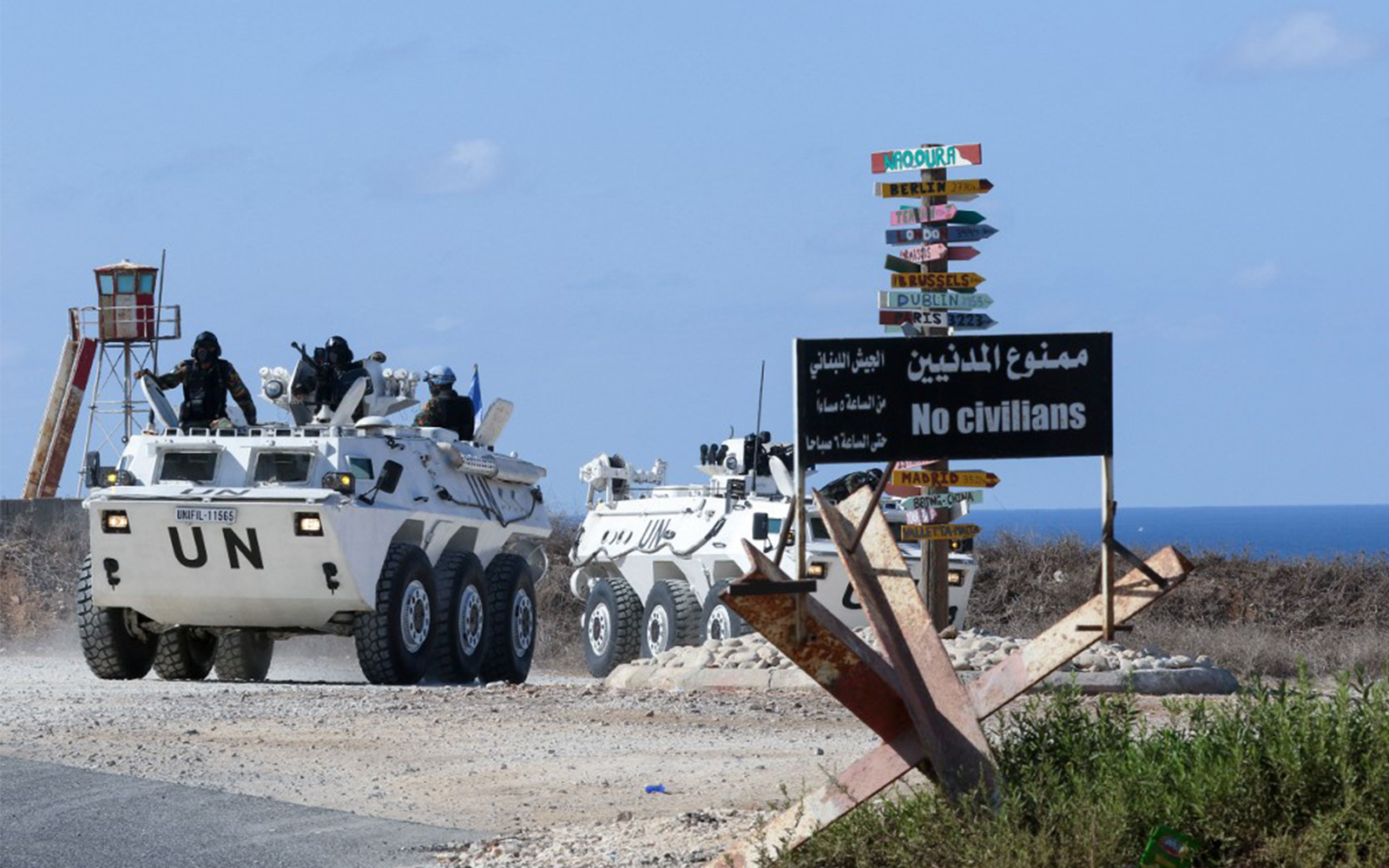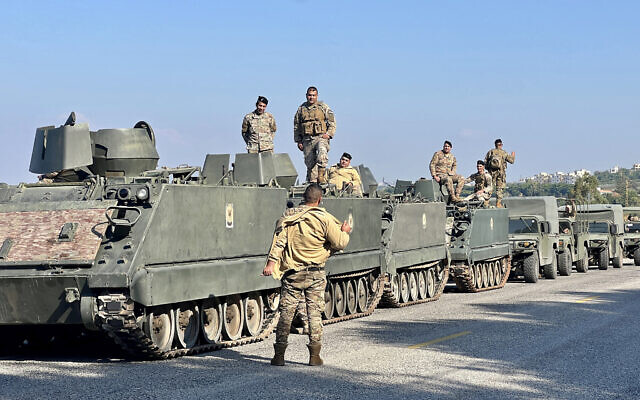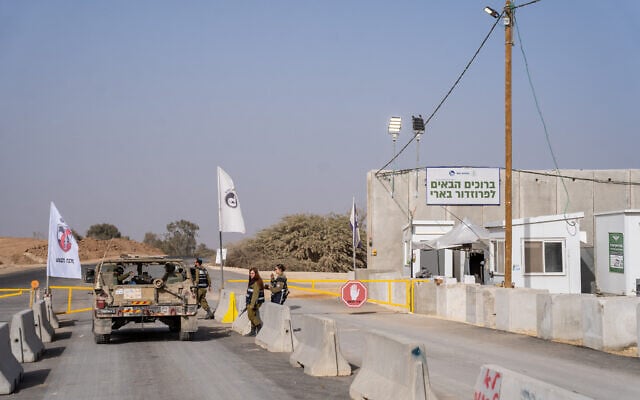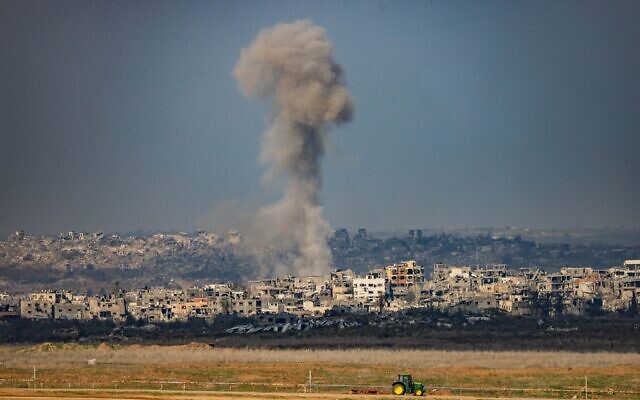



Israel and Lebanon agreed on Tuesday to open negotiations to delineate the border between the two countries, the Prime Minister’s Office said.
After a four-way meeting with the US and France at the United Nations peacekeeping force headquarters in Naqoura, the two sides also announced that three joint working groups would be established.
The teams will focus on the five points Israel still occupies inside of Lebanon, the Blue Line that marks the de facto border between Israel and Lebanon, the points that are under dispute, and Lebanese citizens held by Israel.
Israel also agreed to release five Lebanese detainees as a “gesture to the new Lebanese president,” Joseph Aoun, the PMO said, adding that the release is coordinated with the US.
Lebanon said it had received the four Lebanese “hostages” from Israel, with a fifth to be handed over on Wednesday, according to a statement by the Lebanese president’s office on X.
Citing two US officials, Axios reported that one of the Lebanese nationals released by Israel is a member of Hezbollah.
According to reports in Lebanon, a total of 11 Lebanese nationals are currently being held by Israel.
The working groups could meet as early as next month, according to Axios.
Jerusalem and Beirut negotiated a maritime boundary in 2022 — an agreement brokered by the US — but the two countries have yet to adopt an official land border.

A November 27, 2024, truce in Lebanon largely halted more than a year of hostilities between Hezbollah and Israel, including two months of full-blown war during which Israel sent in ground troops. The fighting began with attacks by the terror group on the Jewish state on October 8, 2023, in support of ally Hamas, which had invaded Israel from Gaza a day earlier. Persistent rocket fire from Lebanon displaced some 60,000 Israeli civilians.
“Everyone involved remains committed to maintaining the ceasefire agreement and to fully implement all its terms,” US Deputy Presidential Special Envoy Morgan Ortagus said in a statement. “We look forward to quickly convening these diplomat-led working groups to resolve outstanding issues, along with our international partners.”
Despite the diplomatic breakthrough, combat continued in Lebanon on Tuesday, with an Israeli drone strike in the southern part of the country killing a Hezbollah operative, a military source said.
The strike on a car in the Nabatieh area in southern Lebanon on Tuesday targeted a Hezbollah commander in the terror group’s aerial defense unit, said the IDF.
He was identified by the military as Hassan Abbas Izzedine. Lebanese media outlets published images of the vehicle’s remains between the villages of Deir Zahrani and Humin al-Fawqa in Southern Lebanon.

The IDF said he was a “significant source of knowledge” in Hezbollah’s aerial defense unit and led attempts to rebuild the unit’s infrastructure that was decimated during the war. Izzedine also worked to procure new equipment for the unit, which posed a threat to Israeli military aircraft, the IDF added.
Another Israeli Air Force strike in southern Lebanon targeted a group of Hezbollah operatives who were identified at a facility belonging to the Iran-backed group, according to the IDF.
The IDF also carried out airstrikes on Friday night in southern Lebanon, saying it targeted a Hezbollah operative and sites used to store weapons and rocket launchers, adding that the strikes were carried out due to the threat they posed to Israel.
Separately on Tuesday, the IDF carried out an airstrike on suspects in Gaza that were threatening Israeli forces, it said in a statement.
The territory’s Hamas-affiliated civil emergency service said the strike killed four people.
According to the IDF, the drone strike targeted a group of Gazans near the Netzarim checkpoint, south of Gaza City.

The military said the strike was ordered “after terrorists were spotted acting in a suspicious manner on the ground in central Gaza and they posed a threat to troops.”
The suspects were planting a bomb, a military source said.
IDF troops are still deployed inside a buffer zone along the Gaza border amid an uncertain ceasefire between Israel and Hamas that officially ended at the beginning of the month.
The IDF has repeatedly warned Palestinians against approaching the area.
Over the weekend, the IDF carried out airstrikes in Gaza, targeting operatives planting a bomb and another group operating a drone.

In recent weeks, there have been several attempts to smuggle contraband into the Gaza Strip, with the IDF saying suspects on the Israeli side load up drones with weapons or drugs and fly them over the border.
The strikes in Lebanon and Gaza came during ceasefires on both primary war fronts, but Israel has said it will continue to act against terror operatives who are in breach of the truces and who pose a threat to its forces.
Last month, Israel withdrew all its forces from southern Lebanon, except five strategic points, saying it had received a green light from the US to remain at those posts and citing the need to prevent Hezbollah from returning to the area and threatening Israel.
In Gaza, Israel and Hamas agreed to a ceasefire and hostage release deal that began on January 19, which has seen 33 Israelis returned. They are now in talks to extend it, though Jerusalem has warned it could soon resume fighting if Hamas does not continue to release hostages.
Agencies contributed to this report.
